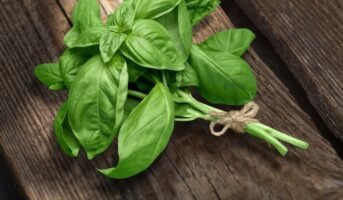Common yarrow is a tough plant that comes back every year and has lots of names, like gordaldo, poor man’s pepper, and thousand leaf. It can grow really tall, over 3 foot, in one season, and it shows off a bunch of small flowers grouped together on long, slim stems. This plant is well-known for being strong and can handle cold winters, hot summers, lack of water, and not-so-great soil. It happily blooms in sunny spots. With its tall stems holding colourful flowers and feathery leaves, it’s great for gardens that have a cosy, old-fashioned feel or ones filled with wildflowers.
Yarrow plant: Key facts
| Botanical name | Achillea Millefolium |
| Common name | Yarrow, common yarrow |
| Family | Asteraceae |
| Native area | Asia, Europe, and North America |
| Plant size | 2 to 3 ft. tall, 2 to 3 ft. wide |
| Sun exposure | Full sun exposure |
| Soil type | Sandy, loamy, clay, well-drained |
| Soil pH | Neutral |
| Flower colour | White, yellow, pink, red, purple, orange |
| Toxic | Toxic to cats, dogs, and horses |
Yarrow plant: How to care for it?
Light: Yarrow shows a different choice for garden locations mainly like to stay in full sunlight. The amount of sunlight not only maintains its compact form but also promotes production of more flowers. They can grow in partial but can hamper the plant growth making it long and spindly.
Soil: The common yarrow shows great adaptability to various soil compositions, ranging from sandy to loamy to clayey. Their ideal soil for growth is dry, well-drained conditions. It is advisable not to use any fertilisers or compost, as nutrient-rich soil may encourage aggressive and potentially undesired expansion of the plant.
Water: At initial stages it may require frequent, light waterings to help germination and nurture small seedlings. After that, a weekly water supply of merely 1/2 inch proves sufficient for constant growth. During the rainy season, if the water level rises to 1 inch per week the watering should be discontinued.
Temperature and humidity: The plant likes warm summer temperatures between 18°C to 23°C which is ideal for them but too much heat can cause the plant to get damaged mainly when the temperature rises to 30°F or above and it also doesn’t support freezing temperature as it can cause roots to get ruptured.
Fertiliser: Yarrow plants demand minimal attention in terms of nourishment. Only a little compost is sufficient for their growth as too much fertiliser can cause heavy growth causing invasive spread.
See also: How to grow and care for Wall Flower?
Yarrow plant: Types
Some of the types of Yarrow found are discussed below:
Anthea yarrow: Anthea Yarrow, scientifically known as Achillea ‘Anblo,’ appears as a hybrid yarrow, showing 3-inch-wide clusters of soft primrose-yellow flowers that at older ages change into a creamy hue.
‘Appleblossom’ yarrow: It is officially identified as Achillea millefolium ‘Appleblossom,’ this fast-spreading perennial shows delicate pale pink blooms completed by greyish-green feathery leaves.
‘Apricot Delight’ yarrow‘: Apricot Delight’ yarrow, or Achillea millefolium ‘Apricot Delight,’ is a reddish, apricot colour flower but gets changed when it grows older and changes to peachy coral colour.
Common yarrow: Common yarrow, scientifically termed Achillea Millefolium, appears as a drought-tolerant indigenous species covered with ferny green foliage and clusters of white flowers during the summer months.
Fernleaf yarrow: Fern leaf yarrow, scientifically known as Achillea Filipendulina, this variety exhibits finely cut grey-green foliage, soaring to heights of 3 to 5 feet. Its mustard-yellow flowers make a unique appearance in the mid to late summer period.
‘Paprika’ yarrow: The ‘Paprika’ yarrow, formally called Achillea Millefolium ‘Paprika,’ has a brilliant colour of scarlet red flowers with a distinctive yellow eye, and at an older age the colour changes to pink hue.
Yarrow plant: How to plant?
Prepare the seedling tray by filling it with a sterile soilless potting mix or a seed starter mix. Delicately sow the seeds atop the mix, avoiding the urge to cover them with additional soil and also make a seed-to-soil contact by applying gentle pressure.
Position the seedling tray strategically in a warm and sunlit window, patiently waiting for the seed to germinate, this process typically takes around two weeks. Once germination is done, start the process of hardening off the nascent plants. Gradually harden them by taking them to the outdoor environment by placing the tray outdoors during daylight hours, and returning it indoors overnight.
Once the plants have successfully gotten habituated, proceed with the transplantation phase. Carefully relocate the plants to the designated spot in your garden, ensuring a seamless transition into their permanent outdoor habitat.
See also: How to grow and care for Delphinium flowers at home?
Yarrow plant: Common problems when growing
Common yarrow, when it gets excessive water saturation at its roots, may develop exposure to two common problems: botrytis mould and powdery mildew. These maladies show their sign as a white powder on the leaves, posing a threat to the plant’s health. This can be stopped by increasing the soil condition and airflow and placing the tree in sunlight.
In addition to this fungal infection, spittlebugs may trespass upon a yarrow patch. This species shows a tiny spot of “spit” on the plants. If the population increases then a strong spray of water on the plants will gradually reduce the population and the coating
Yarrow plants: Toxicity
Common yarrow poses a toxicity risk to dogs, cats and horses. Consuming it may cause symptoms such as vomiting and diarrhoea, and additionally causes behavioural changes like depression, loss of appetite, and excessive salivation. Meanwhile, human interaction with yarrow can rarely result in skin rashes and heightened sensitivity to sunlight. Otherwise, just contact with yarrow generally does not cause substantial irritation, unless the individual possesses exceptionally sensitive skin, such as that found in young children.
FAQs
Is it easy to grow yarrow in a garden?
Yes, growing common yarrow (Achillea Millefolium) and fernleaf or yellow yarrow (Achillea Filipendulina) in your garden is a breeze. Just stick them in the soil, and they'll add colour all summer.
Can yarrow be an indoor plant?
No, yarrow likes its sleep and needs some chill to do its best. Bringing it inside during winter won't stop it from taking a nap. In fact, too much light, warmth, dry air, and watering indoors can stress it out.
Where's the best spot to plant yarrow?
For the best show, pick a sunny spot most of the day. Yarrow doesn't mind poor soil, but it loves well-draining soil, so find a place that doesn't trap water. Keep your yarrow pals about one to two feet apart.
Is yarrow all about flowers or leaves?
Yarrow, or Achillea Millefolium, is a flowering plant. It's native to Asia, Europe, and North America.
What are the beneficial properties of yarrow?
People use yarrow as a folk medicine. It's got flavonoids that amp up saliva and stomach acid, making your digestion better.
Where does yarrow grow the best?
Yarrow grows in areas covered with abundant sunlight, preferring garden spots that receive full sun to facilitate strong stems supporting its vibrant flower heads.
Does yarrow grow in India?
Common yarrow grows in the Himalayan regions of Jammu & Kashmir, Himachal Pradesh, and Uttarakhand, living at altitudes ranging from 1,050 to 3,600 metres.
| Got any questions or point of view on our article? We would love to hear from you. Write to our Editor-in-Chief Jhumur Ghosh at jhumur.ghosh1@housing.com |
Priya Banerjee, a writer with a keen eye on the property market, she deciphers the ever-changing trends in residential real estate. Priya excels at simplifying complex real estate terms, making them easy for everyone to understand. Her well-researched advice helps buyers and investors understand complex topics.












